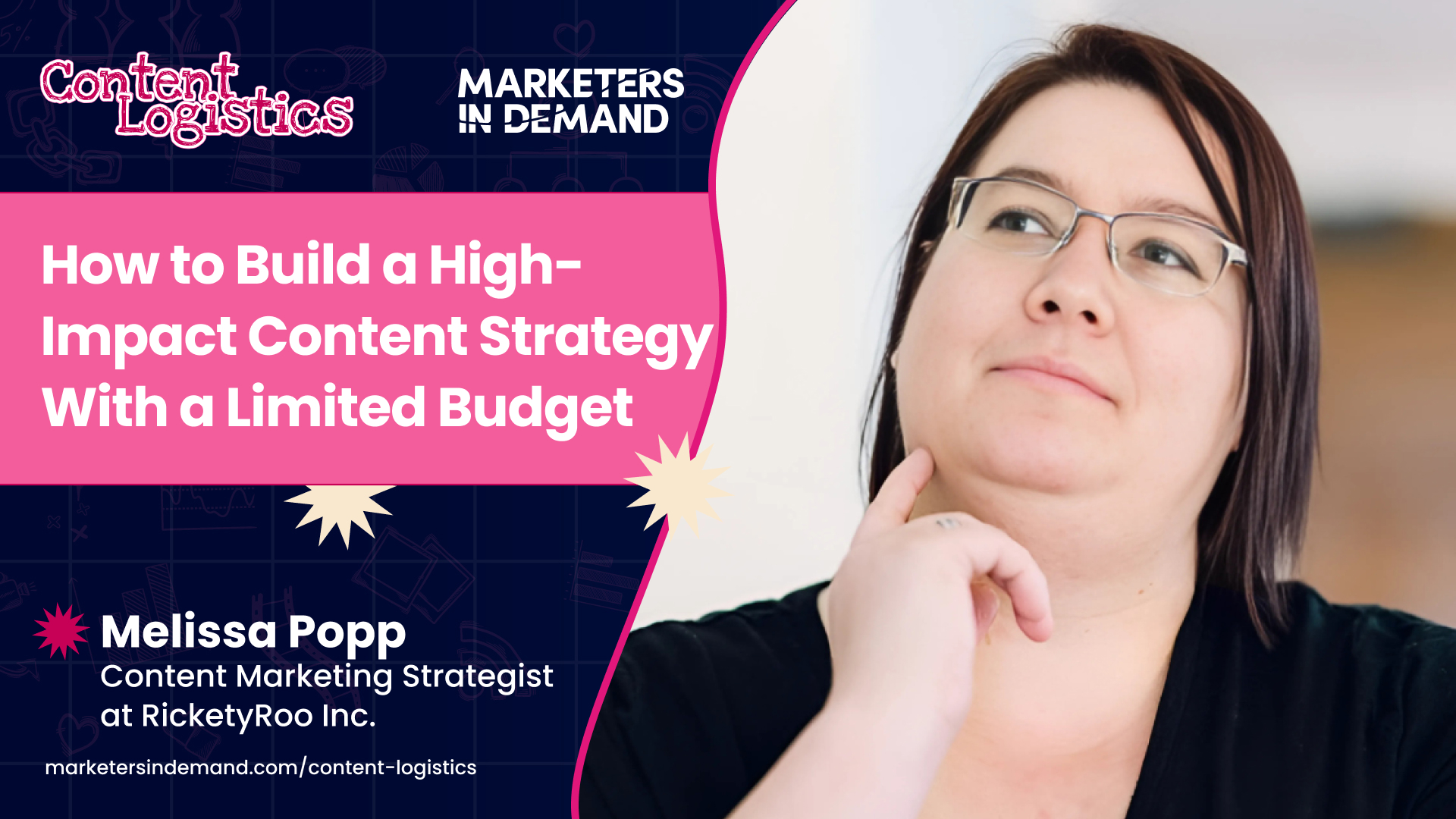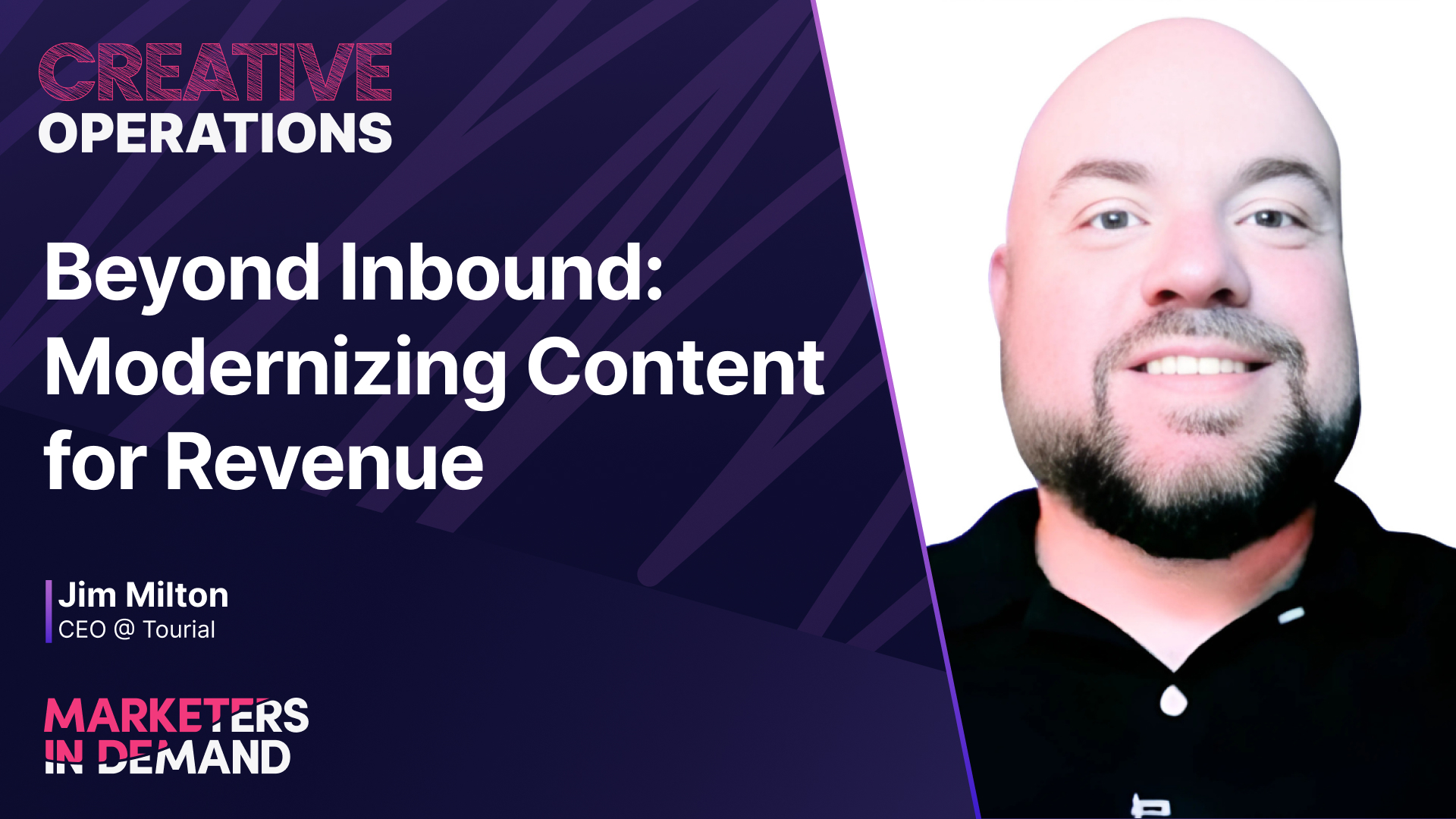Webinars can be a powerful growth channel—or a total flop. In this episode of Content Logistics, Baylee Gunnell sits down with Vicki Stepherson, Executive Producer at Sweet Fish Media, to explain why most B2B webinars fail and what marketers can do differently.
Vicki shares a clear framework for running high-performing webinars, from nailing your topic to understanding your audience’s pain points. She explains why marketers should commit to at least six events, how to test timing and content, and why title clarity is non-negotiable. The goal? Stop guessing. Start planning with purpose.
You’ll also hear practical tips on driving attendance, like smart email tactics, co-promotion strategies, and why list-building should be your top priority if you’re just starting. Whether you’re a one-person team or scaling a full series, this episode will help you build webinars that convert.
Featured Guest
Key Insights
Stop Guessing—Define the Goal Before You Hit Record
Webinars fall flat when marketers treat them like one-off content pieces instead of strategic tools. The key to running a webinar that performs? Start with a clear goal. Are you building your list, moving leads through the funnel, or boosting brand awareness? Each goal calls for a different approach.
Without alignment, you risk throwing time and money at a format that doesn’t return much. A defined goal informs your topic and target audience and drives decisions about guest selection, timing, and follow-up strategy.
If you don’t know exactly why someone would show up for your webinar, it’s not time to launch. Anchor everything to the result you want to drive, and let that guide your promotion, messaging, and speaker prep.
Consistency Beats Virality: Why You Need a 6-Webinar Commitment
Running a single webinar and hoping for magic is a waste of time. Vicki recommends committing to at least six sessions before you judge performance. That gives you space to test titles, topics, time slots, speakers, and formats—without overreacting to a single result. More importantly, it helps build audience trust and expectation.
Regular cadence allows marketers to develop a repeatable engine: people start recognizing your brand, your format, and the value they’ll get. It also gives you the data you need to improve.
Over time, you’ll learn which topics resonate with your ICP and which don’t. You’ll see how title clarity affects sign-ups. You’ll discover whether your audience prefers tactical how-tos or broader strategy discussions. Treat webinars like a long game, not a viral bet—and you’ll build a channel that works harder every time.
Most Webinar Signups Happen Last-Minute—Plan Your Emails Accordingly
Marketers often panic when registration numbers are low by two weeks. But Vicki says nearly 60% of webinar signups happen the week of the event. That makes the final stretch your most critical promotion window, and email is still your most effective channel.
To take advantage of this, you must test subject lines early and refine them based on real open and click data. Avoid relying on just one send. Resend to non-openers. Give guests and partners easy-to-use copies and reminders. And keep your email design simple—text-based often works better than branded HTML.
Short, clear messaging that promises a specific outcome beats polished fluff. A good title gets them to open. A clear benefit gets them to register. Instead of throwing together a last-minute push, make the final 5–7 days your most strategic phase. That’s when it counts.
Episode Highlights
How to Pick a Webinar Topic That Converts
Choosing the right topic isn’t about being clever or broad—it’s about aligning directly with your audience’s pain points, interests, and mindset. Vicki explains that effective topics fall into one of three buckets: solving a known challenge, staying current with the industry, or showcasing specific expertise. Great webinars don’t try to please everyone—they zero in on a focused, relevant theme. She also emphasizes the need to adapt your framing based on audience type. Sales audiences want tactical insights they can apply today. Marketing audiences may crave community-driven conversations. Know who you’re talking to and build accordingly.
“Make sure that you understand your target audience and then really align that with what’s top of mind for them right now. Understanding how the framework should be—should it be a thought leadership one, or should it be more tactical? We’ve learned with one of my other clients, for the sales, they want tactical stuff. If you try to do thought leadership, no one’s gonna show up because people don’t want that. They want tangible things that they can use right away.”
How to Turn One Webinar Into a Content and Conversion Engine
Even a webinar with modest attendance can be a powerful content machine. Vicki emphasizes repurposing: blog posts, LinkedIn clips, follow-up campaigns, and internal sales enablement are just a few ways to extend the value. She urges teams to focus less on registrant count and more on registrant quality—if 80% of attendees match your ICP, it’s a huge win. Teams can use follow-ups to push relevant resources or create nurture streams based on the session. Great content isn’t just what happens live—it’s what happens after.
“We’ve also had it where we have low attendance on something or registration, but it’s exactly their ICP. So we have a hundred people show up, and 80% of them are exactly who they’re trying to reach out to. That’s still a win.”
Building the Right Guest Lineup
Picking the right speaker can make or break a webinar. Vicki outlines a pragmatic checklist: Does your audience trust them? Can they speak clearly and keep energy up? Do they have reach—and are they aligned with your brand? She recommends scanning LinkedIn, checking conference lineups, or reviewing podcast appearances to assess delivery and fit. Beyond external guests, internal speakers are often overlooked assets. CEOs or subject matter experts can anchor a brand’s thought leadership and drive high engagement, especially when consistently appearing as hosts or panelists.
“We’ll look at conferences in that industry and see if they’re popular. If we bring them on, will the audience be excited? They also need an engaging presence, especially if you’re trying to grow your audience. If they have reach and influence, if they post, will that bring people to the webinar? Do they have a list they can promote it to? That brings in more people who match your ICP. And we always make sure they don’t conflict with your company, because you don’t want them holding different views.”
Why Title Clarity Is More Important Than Creativity
The title is the first—and often only—chance to convince someone to register. Vicki explains that fun or vague titles may feel engaging, but usually underperform. Strong titles are clear, specific, and directly tied to a value proposition. What will someone walk away with? What’s the pain point being addressed? Is there urgency? She advises skipping fluff and going straight to the outcome. For example, titles like “3 Steps to Close More Meetings” or “2 Cold Call Scripts That Convert” immediately communicate utility.
“We always try to make sure that it’s clear, concise, and shows you exactly why you should attend or sign up. I see a lot of times where the title is fluffy and very generic, I don’t know what I will get out of the webinar… But if you tell me ‘3 steps to close more meetings’ or whatever, I’ll understand exactly what I’m gonna get.”











